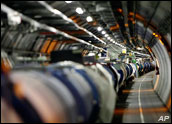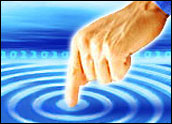
IBM looked into its crystal ball and saw five technologies becoming ubiquitous in the next five years. While IBM spends most of its time, effort and intelligence in the innards of big organizations, the five technologies it sees on the horizon are very personal.
Personal energy. We’ll be able to use our own motion, as well as motion around us, to harness energy. IBM imagines extending this concept to running water. The U.S. military is already using devices on boots to recharge mobile devices. Cyclists are also using motion to generate energy.
The end of the password. IBM sees us using multifactor biometrics for personal identification, through systems that aggregate retinal, voice and other unique physical characteristics.
Mind reading. This may seem like a stretch, but IBM is researching ways to connect the brain to electronic devices such as PCs and smartphones. We will need some strong filters for this technology.
The end of the digital divide. IBM sees mobile devices breaking down the accessibility gap that currently affects disadvantaged areas. This could potentially enhance healthcare and spread economic opportunities.
The end of junk mail. Enhancements in identifying individual consumer interests could bring the onslaught of inappropriate messaging to an end.
The Good, the Bad and the Funny
IBM’s ideas may be a bit raw to be fully realized in five years.
“While IBM’s predictions are intriguing, they’re also in very early stages of development,” Charles King, principal analyst at Pund-IT, told TechNewsWorld.
Which of these predictions would be most earthshaking?
“No longer needing passwords and erasing the digital divide seem to me to be the most potentially life changing,” said King. “The end of passwords could significantly impact security across virtually every form of stationary and mobile IT, allowing people and businesses to play and work online without fear.”
Ending the digital divide “would open the Internet’s formidable information resources to people and regions of every sort,” added King. “That could be hugely beneficial, and create new opportunities for individuals, communities and businesses across the globe.”
People-power energy generation could have comic potential, King remarked.
“This is probably just a reflection of my sense of humor, but using bodily action to create electrical energy seems tailor-made for a raucous ‘Saturday Night Live’ skit or Home Shopping Network gizmos,” he said.
As for the end of junk mail, that development may come without the need for any sort of technological advancement, suggested King. “Given the current direction the USPS, better-targeted junk mail may soon become a moot point or a historical footnote.”
Some Ideas Are Almost Here
Some of the technologies on IBM’s list are near or very close to being here.
“The end of the digital divide is already happening,” Laura DiDio, principal analyst at ITIC, told TechNewsWorld. “Places like Africa, which has the least amount of infrastructure, are experiencing a revolution in the way they do business.”
We will never see the complete end of the digital divide, she said, but we’re getting close. “This one is not pie-in-the-sky. People are finding ways — even if they’re dirt poor — of getting a smartphone.”
The end of passwords could be farther away than IBM’s optimistic projection, said DiDio. “I can see the ‘no more passwords’ happening in about 10 years. Biometrics still has to become commoditized first.”
Mind reading is the idea DiDio found particularly intriguing.
“That sounds out-there, but artificial intelligence was out-there 20 or 30 years ago,” she said. “This technology would have to figure out the way the brain works. That’s interesting.”
As for the most frivolous? Personal energy generation.
“That one I find the most hilarious,” said DiDio. “What does that mean for the 80 percent of the population who are slow? As for the end of junk mail — yes, yes.”





















































